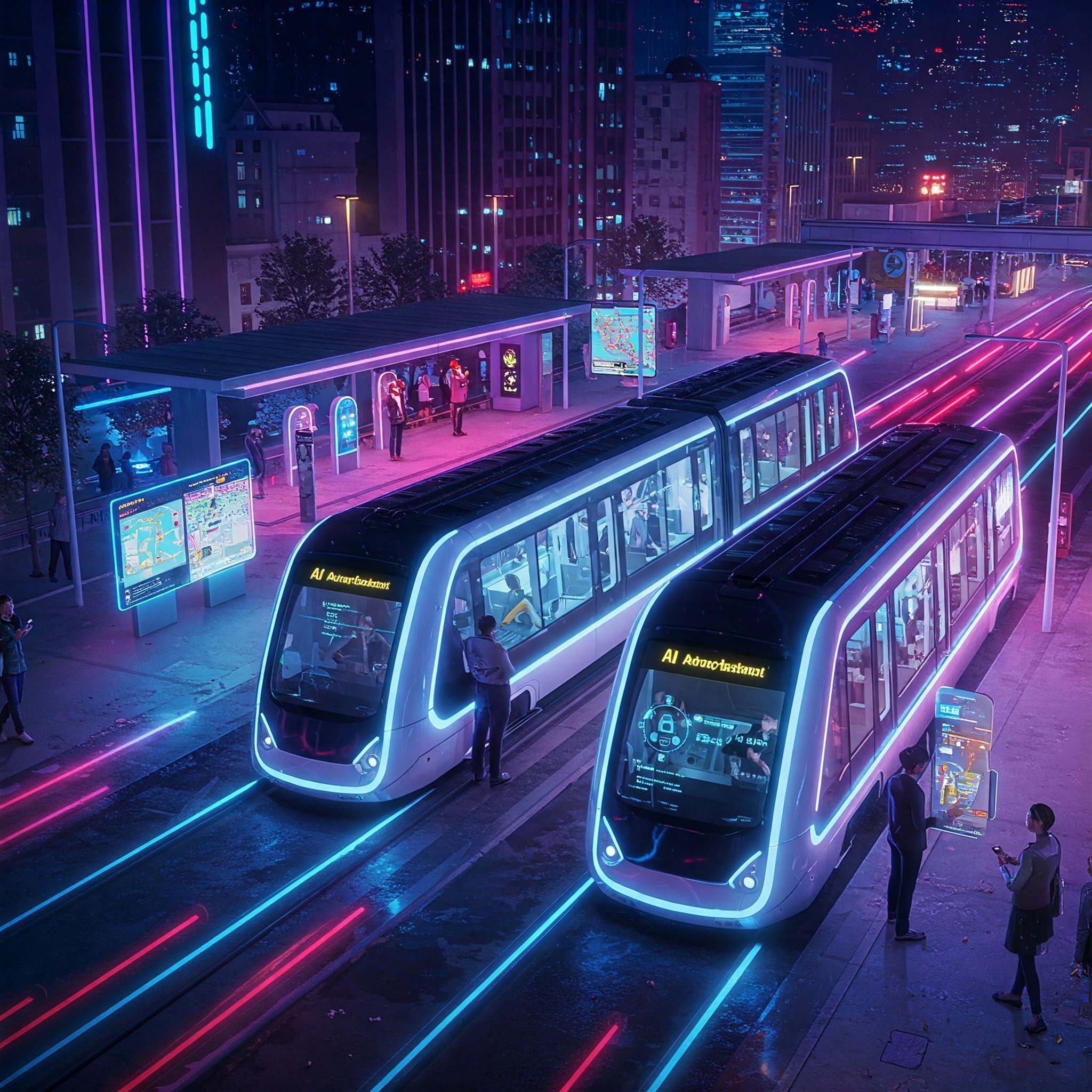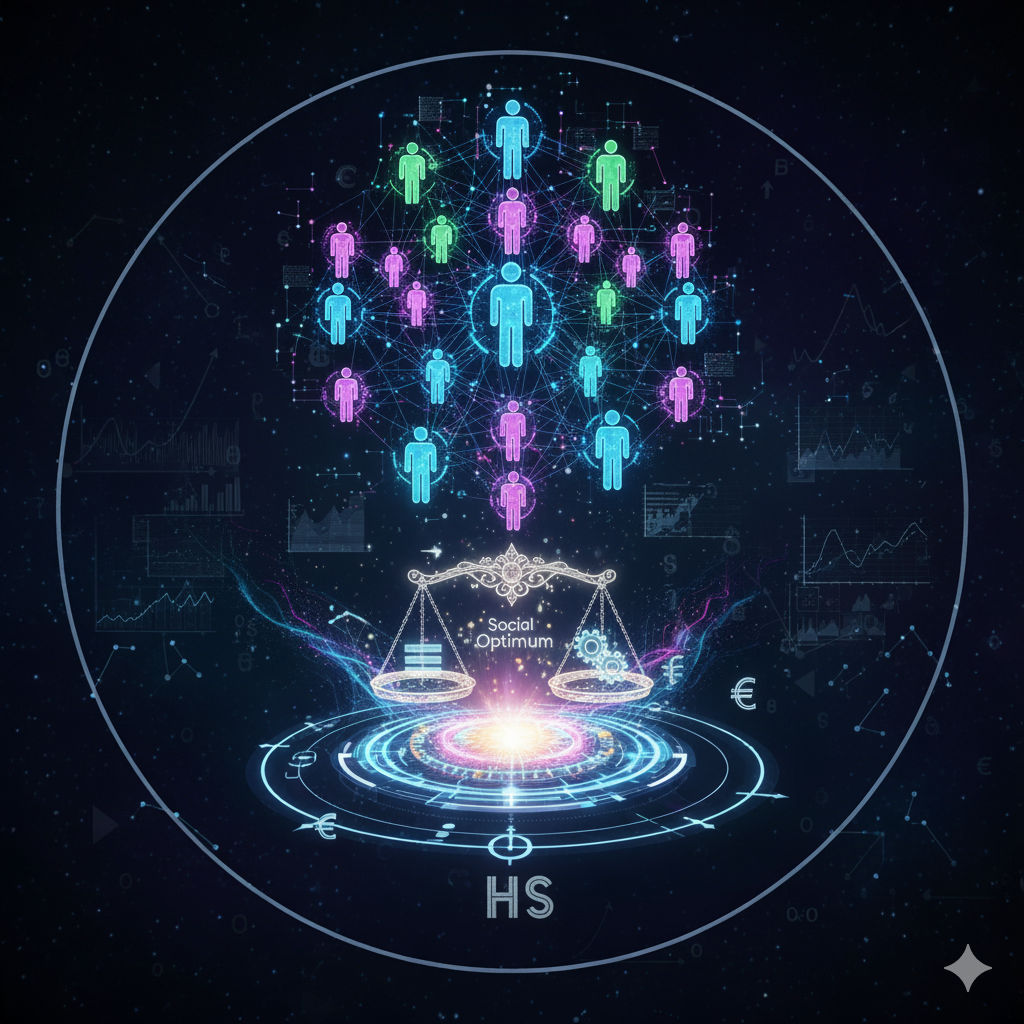Introduction
In the ever-growing urban landscape, public transport systems play a critical role in ensuring mobility and reducing traffic congestion. However, with the rising urban population and increasing demand for efficient, sustainable, and safe transportation options, traditional public transport systems are struggling to meet the expectations of modern society. This is where Artificial Intelligence (AI) comes into play, offering promising solutions that can enhance the efficiency, safety, and sustainability of public transport networks.
AI-assisted public transport systems use machine learning (ML), data analytics, sensor technology, and real-time processing to optimize routes, improve safety, and provide personalized and on-demand services. These systems aim to transform the way cities manage mobility and improve the overall passenger experience.
1. What is AI-assisted Public Transport?
AI-assisted public transport systems integrate AI technologies into the management and operation of transportation services. These systems use data-driven decision-making processes to optimize operations such as route planning, fleet management, passenger flow management, predictive maintenance, and fare collection.
AI technologies in public transport include machine learning algorithms, computer vision, sensors, predictive analytics, autonomous vehicles, and natural language processing. By using AI, public transport systems can adapt to real-time conditions, improve operational efficiency, and reduce environmental impact.
2. Key Components of AI in Public Transport
AI-assisted public transport systems are built on several key technological components:
a) Data Collection and Real-Time Monitoring
- Sensors and IoT devices placed on buses, trains, and stations collect real-time data on vehicle location, passenger numbers, traffic conditions, and environmental factors.
- This data feeds into AI systems for real-time decision-making, ensuring timely responses to changes in demand and environmental conditions.
b) Machine Learning and Predictive Analytics
- Machine learning algorithms analyze historical and real-time data to predict demand patterns, optimize routes, and improve fleet utilization.
- Predictive analytics can also anticipate service disruptions, enabling proactive measures to reduce delays and improve reliability.
c) Autonomous Vehicles and Driver Assistance
- AI technologies power autonomous vehicles in public transport, allowing buses, trains, and shuttles to operate without human intervention.
- Driver assistance systems use AI to enhance safety by providing features like collision detection, lane-keeping assistance, and adaptive cruise control.
d) Personalized Services and On-Demand Mobility
- AI systems can offer personalized travel experiences by providing customized routes, schedules, and vehicle options based on passenger preferences.
- On-demand mobility solutions, like ride-hailing services integrated with public transport, optimize urban mobility by using AI to match passengers with the nearest available vehicle.
e) Automated Fare Collection
- AI-driven automated fare collection systems, such as contactless payment methods, ensure smooth and quick boarding while reducing fare evasion and operational costs.
3. Benefits of AI-assisted Public Transport Systems
a) Improved Efficiency and Reduced Congestion
- AI can optimize vehicle routing and scheduling, ensuring that public transport runs efficiently and avoids unnecessary delays.
- AI systems analyze traffic patterns, weather conditions, and passenger data to adjust routes in real-time, ensuring timely arrivals and reducing congestion in high-density urban areas.
b) Enhanced Safety
- AI-powered collision detection and emergency braking systems increase safety for both passengers and pedestrians.
- Driver assistance systems equipped with AI can detect potential hazards, reducing human error and preventing accidents.
c) Cost Savings
- By optimizing fleet management and reducing fuel consumption through better route planning, AI can significantly reduce the operational costs of public transport systems.
- Predictive maintenance powered by AI can reduce downtime and expensive repairs by identifying potential issues before they become critical.
d) Environmental Sustainability
- AI can help reduce emissions by optimizing routes and encouraging the use of electric or hybrid vehicles in public transport fleets.
- Demand-response systems powered by AI also enable shared mobility, leading to fewer cars on the road and less congestion.
e) Better Passenger Experience
- AI can enhance the passenger experience by providing real-time information, personalized travel suggestions, and reducing waiting times.
- Smart ticketing systems powered by AI streamline the fare collection process, making it more convenient for passengers.
4. Use Cases of AI-assisted Public Transport
a) AI in Bus and Train Operations
- Route Optimization: AI uses data to predict demand patterns and optimize routes, ensuring buses and trains run on time and avoid traffic jams.
- Passenger Flow Management: AI monitors the number of passengers and adjusts the frequency of buses or trains to prevent overcrowding.
- Fleet Management: AI helps in tracking and managing the fleet, ensuring that each vehicle is used efficiently and is dispatched at the right time.
b) Autonomous Vehicles in Public Transport
- Several cities are experimenting with autonomous buses and shuttles. These vehicles use AI to navigate urban roads safely and efficiently.
- Driverless shuttles can offer first-mile/last-mile solutions, connecting passengers to major transit hubs, such as metro stations or bus depots.
c) AI in On-Demand Mobility Services
- Ride-hailing services, such as Uber, Lyft, and others, use AI to match passengers with nearby drivers in real-time.
- These services are integrated with public transport networks, allowing passengers to use a combination of modes (bus, train, ride-hailing) for a seamless travel experience.
d) AI in Traffic Signal Control
- AI-powered smart traffic management systems can prioritize buses or trams at traffic signals, reducing delays and improving the efficiency of public transport.
e) Smart Ticketing and Payment Systems
- AI technologies in smart ticketing make fare collection seamless through contactless payments, mobile apps, and facial recognition.
- AI can analyze payment data to identify trends and offer personalized pricing or discounts to passengers.
5. Challenges and Considerations
a) Data Privacy and Security
- AI-driven public transport systems rely on collecting large amounts of personal data, such as passenger movement, payment details, and location data.
- Ensuring the privacy and security of this data is crucial to prevent breaches and safeguard passenger information.
b) Infrastructure and Technological Limitations
- Integrating AI into legacy public transport systems may be difficult due to outdated infrastructure or a lack of necessary technological infrastructure.
- Public transport systems may need substantial upgrades in communication networks, such as 5G, to support real-time data processing and AI algorithms.
c) Public Trust and Acceptance
- The adoption of autonomous vehicles and AI-driven decision-making requires public trust. Passengers need to feel confident that AI systems are safe, reliable, and transparent.
- Extensive public education and clear communication about how AI systems work are necessary to overcome resistance.
d) Regulation and Policy Development
- Governments need to create clear regulations for the use of AI in public transport, particularly around issues such as autonomous vehicle certification, safety standards, and ethical considerations.
- International cooperation is needed to ensure standardization and prevent technological fragmentation in cross-border transportation networks.
6. The Future of AI-assisted Public Transport
a) Autonomous Public Transport Networks
- The future of AI-assisted public transport involves the full automation of buses, trains, and even taxis. Fully autonomous systems could revolutionize how people move in cities, reducing the need for human drivers and enhancing operational efficiency.
b) Seamless Multi-modal Transport
- AI will enable seamless integration between various forms of transport, including buses, trains, trams, ride-sharing, and even bike-sharing systems.
- Mobility-as-a-Service (MaaS) platforms will offer passengers the ability to plan, book, and pay for multi-modal journeys through a single app.
c) AI-powered Urban Mobility Ecosystems
- Cities will develop smart mobility ecosystems where AI systems manage everything from public transport to traffic, parking, and freight logistics.
- AI-driven data analysis will help cities understand movement patterns and plan for more sustainable, efficient, and equitable transportation networks.
d) Integration with Smart Cities
- AI-assisted public transport systems will play a central role in smart city initiatives, where all infrastructure, from roads to buildings, is interconnected through sensors and data analytics.
- Public transport will become more adaptive, responding in real-time to the needs of citizens.
Conclusion
AI-assisted public transport systems represent the future of urban mobility. These intelligent, data-driven technologies are poised to transform the way we think about transportation, making it more efficient, sustainable, and accessible. From route optimization and autonomous vehicles to smart ticketing and personalized services, AI is helping create a seamless, intelligent mobility ecosystem that benefits passengers, operators, and cities alike.
However, to fully realize the potential of AI in public transport, stakeholders must work together to address the technical, regulatory, and social challenges that arise. By doing so, AI can help shape a more sustainable, accessible, and efficient future for public transport systems around the world.




